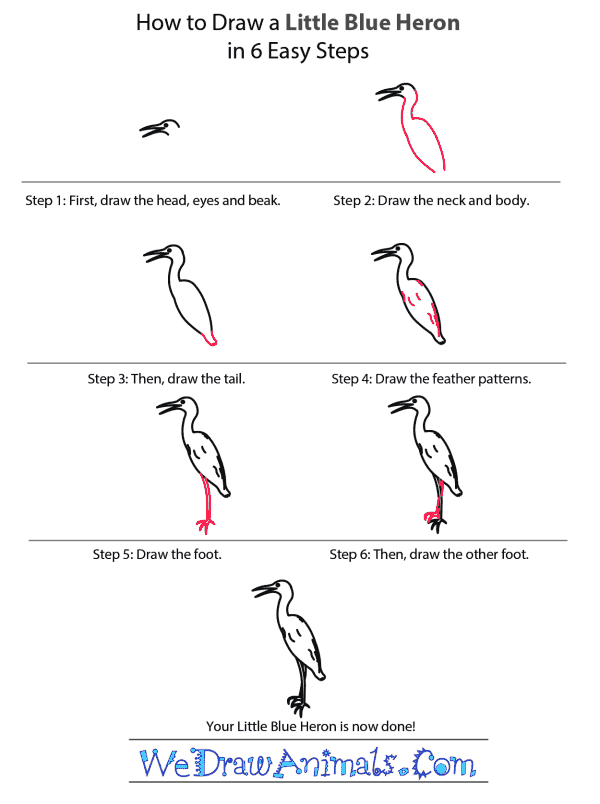In this quick tutorial you'll learn how to draw a Little Blue Heron in 6 easy steps - great for kids and novice artists.
The images above represent how your finished drawing is going to look and the steps involved.
Below are the individual steps - you can click on each one for a High Resolution printable PDF version.
At the bottom you can read some interesting facts about the Little Blue Heron.
Make sure you also check out any of the hundreds of drawing tutorials grouped by category.
How to Draw a Little Blue Heron - Step-by-Step Tutorial
Step 1: Let’s start drawing the Little Blue Heron by drawing the head, eyes, and beak. The bird has a small round head and its beak is open. The top part of the beak should be larger than the bottom. Then place a small circle just above the beak for the eye.
Step 2: The next step is to draw the body. The Heron has a thin but long neck that leads to a narrow body. Leave an opening for the tail.
Step 3: Next, draw the tail. The tail should be narrower for the body but square shaped.
Step 4: Then, draw the feather details. Place small curvy lines through the top half of the body.
Step 5: Draw the first foot. This foot should be long and narrow with four toes.
Step 6: Then draw the second foot. This foot should start lower on the body and end slightly in front of the first foot.
Interesting Facts about the Little Blue Heron
Found throughout the Southern United States, the Northern Coasts of Latin America, and the Caribbean the Little Blue Heron is a common site in marshes and estuaries. Named for their small size and dark blue to purple colors the Little Blue Heron is easily missed because of its methodical foraging methods.
Did you know?
- Little Blue Heron’s build stick nests in the trees next to other colonial waterbird nests.
- Little Blue Heron’s use a stand and wait method to catch their prey, standing still for long periods before suddenly striking.
- Little Blue Heron’s nest in massive colonies where males set up territories to search for mates.
- Young Little Blue Heron’s are able to make short flights at 4 weeks old and are independent at 6-7 weeks.
Lesson plan note: Little Blue Heron colonies create a sea of blues and purples that are amazing to see. Teach students about the diversity of Little Blue Herons by having them draw and color their own version of the bird using a range of dark blues and purples. Use the drawings to make a classroom colony.







